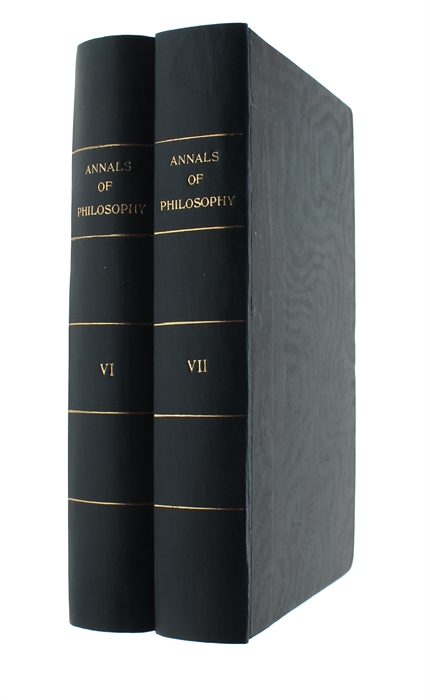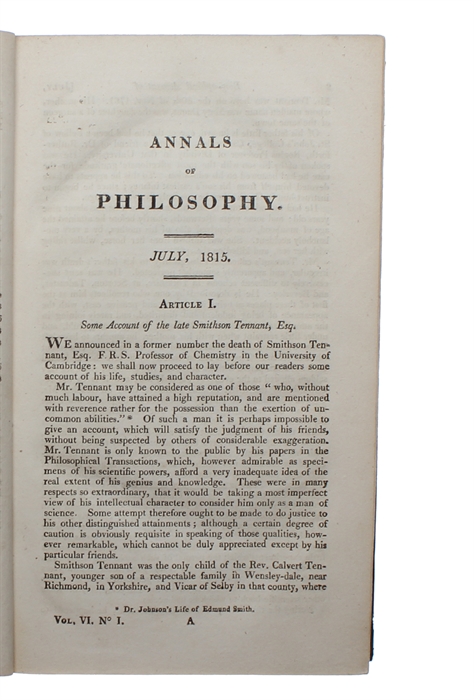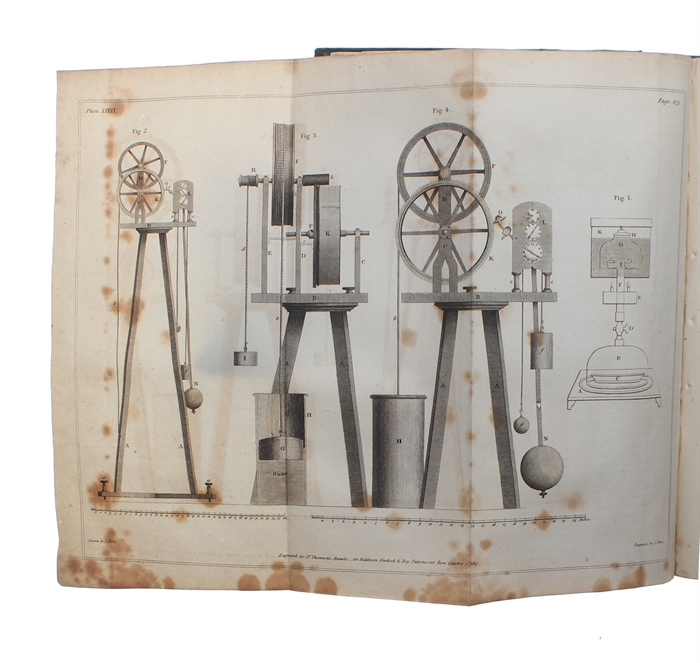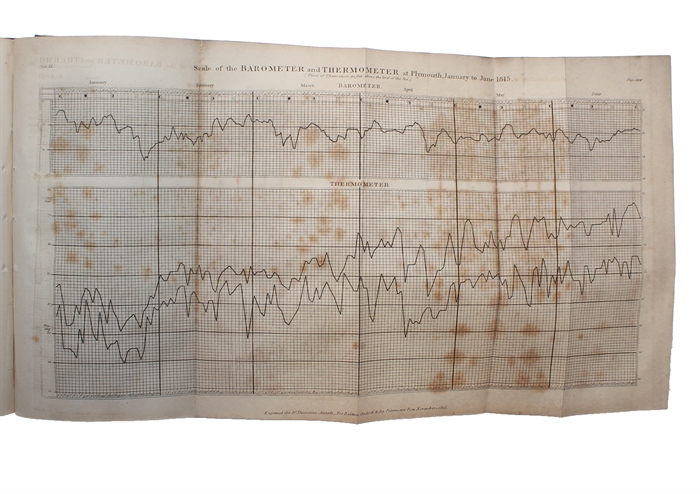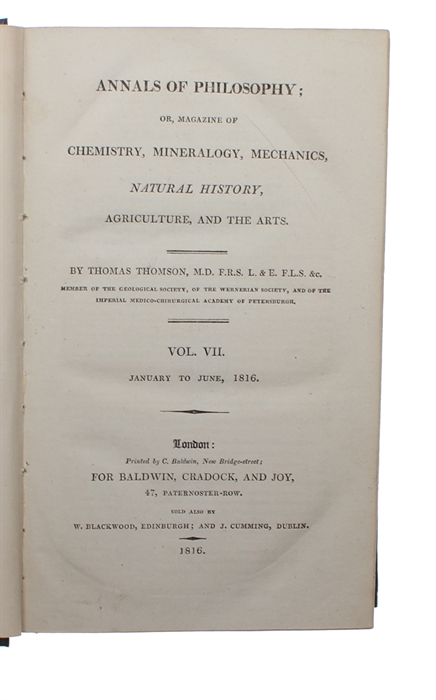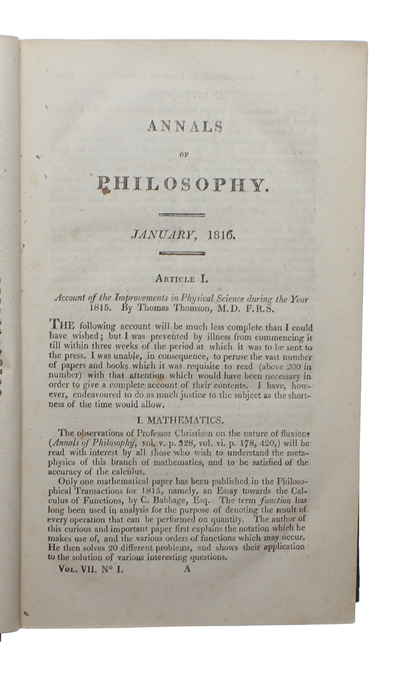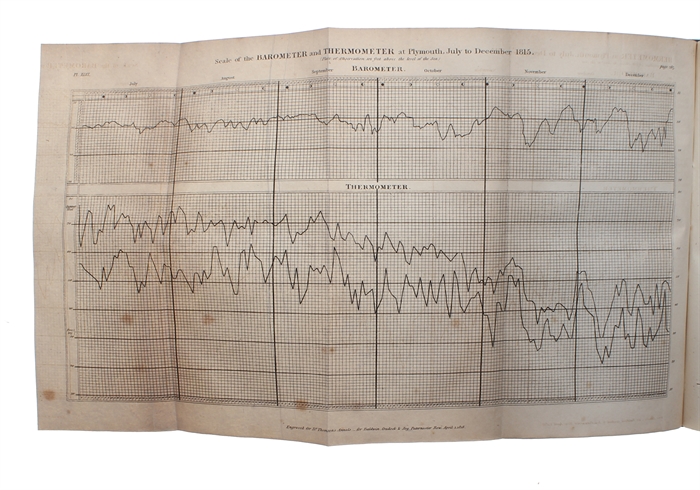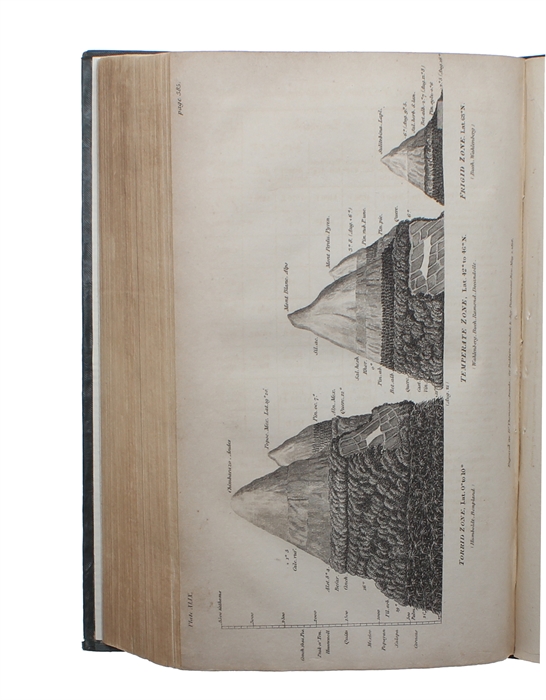(PROUT, WILLIAM). - "PRIMA MATERIA" FOUND - PROUT'S HYPOTHESIS.
On the Relation between the Specific Gravities of Bodies in their Gaseous State and the Weight of their Atoms. (+) Correction of a Mistake in the Essay on the Relation between the Specific Gravities of Bodies in their Gaseous State and the Weights of their Atoms.
London, Baldwin, Cradock, and Joy, 1815 a. 1816.
8vo. Bound in 2 ciontemp. full moiré cloth, rebacked. Endpapers renewed. Spine gilt and with gilt lettering. In: "Annals of Philosophy...by Thomas Thomson", Vol. VI, July to December, 1815 and Vol. VII January-June 1816. VIII,480 pp. a. 6 plates + VIII,488 pp. a. 10 plates. Some brownspots to plates and offsettings from plates, not affecting Prout's papers. Prout's papers: pp. 320-330 a. pp. 111-113. Internally clean.
First appearance of a milestone-paper in the history of chemistry and atomic theory as Prout here set forth - coupled with experimental evidences - the theory that the elements seems to have atomic weights that are whole number multiples of the atomic weight of hydrogen and that all elements is in some way a combination of hydrogen atoms. The theory announced here in Prout's first paper on the subjecy, is called PROUT'S HYPOTHESIS, and it was "not until the twentieth century that new views of the atom, arising out of the Second Scientific revolution of the 1890s, revitalized the notion. As a result of the work of Soddy and Aston a new form of Prout's hypothesis was established and Prout was found to be not wrong, but merely a century premature."(Asimov).
"The concept of a primary substance as the basis of all matter has a tempting simplicity which has appealed to thinkers from the classic Greek age to our own day. The idea was revived in a new garb in 1815-1816 by a London physician, Willia Prout, who observed that with few exceptions the specific gravities of elementary gases (i.e., their atomic weight) were evenmultiples of of that of hydrogen. The experimental errors in the data then available were such asto make the hypothesis appear plausible. Prout concluded, therefore, that hydrogen isthe fundamental constituent from which all other elements are compounded....... his idea that all matter is composed of the same material is now established."(Leicester & Klickstein in "A Source Book in Chemistry 1400-1900", p. 275 ff.). - See also note to PMM 407, entry Moseley The Atomic Table.
Parkinson "Breakthroughs", 1816 C.
Order-nr.: 46918

